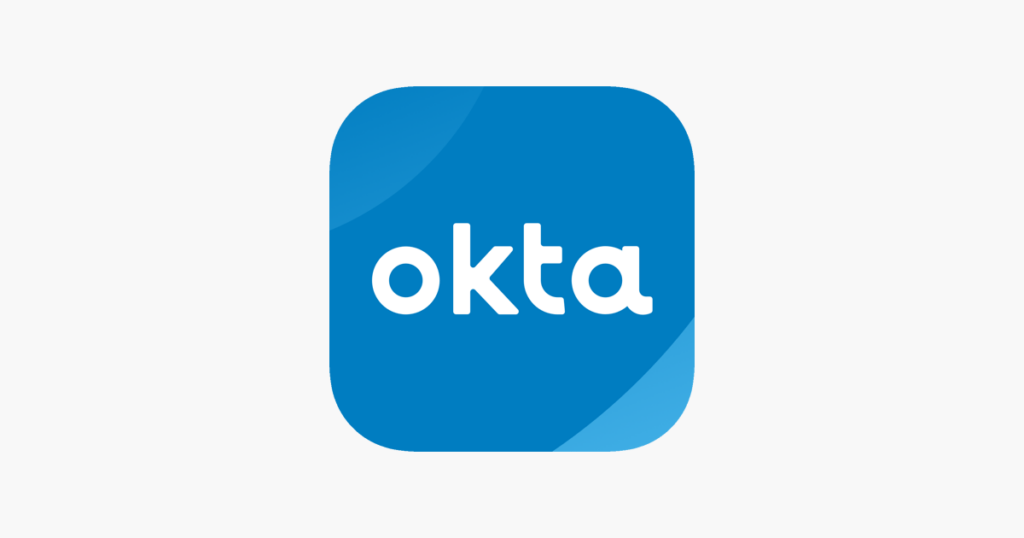Looking for similar companies to CVS? The Consumer Value Store was the company’s initial name. CVS began as a chain of health and beauty supply shops. It aided health and beauty stores in keeping track of their product offerings. Later, pharmacies were added to the business. CVS’s most important industry category is retail drug stores and proprietary stores. Before splitting off in 1996, the company was part of the Melville Corporation. After a merger with Caremark Rx, a pharmacy benefit management firm, it was renamed CVS Caremark Corporation in 2007. In 2014, it was renamed CVS Health.
The corporation owns CVS Specialty, MinuteClinic retail clinics, CVS Caremark, and CVS Pharmacy. It made $256.77 billion in revenue in 2019. The corporation has 300,000 employees. We’ll tell you all about the CVS competitors, including who they are and how much money they’ve made, so keep reading to see how the competition stands up!
15 Biggest CVS Similar Companies
In the United States, CVS is the most popular pharmacy chain. Several pharmacy merchant businesses compete with CVS addition to CVS. In 2022, Walgreens, Kroger Pharmacy, Walmart, and Rite Aid will be ranked as the top CVS competitors in the United States.
The organization offers a wide range of health services and has over 10,000 locations around the country. On the other hand, CVS faces competition from healthcare conglomerates like Cigna and UnitedHealth Group.
The top 15 biggest companies that are similar to CVS are listed below.
Walgreens
Walgreens, the first of the 11 largest enterprises that Walgreens Boots Alliance, the parent company owns. It is a major competitor and direct competitor of CVS because it provides healthcare, specialized healthcare services, and retail merchandise. Walgreens has nearly 13,000 outlets worldwide, most of which are in the United States. It has operations in over 11 countries and may expand in the future.
Furthermore, the UK has become the largest drugstore chain in the international market, with over 2,300 outlets. Walgreens generated more than $139 billion in 2020, with prescription revenue over $88.5 billion, putting them in a close race with CVS.
Cardinal Health
Based in Dublin, Ohio, Cardinal Health provides integrated healthcare services and products to health systems, hospitals, clinical laboratories, physician offices, ambulatory surgery facilities, and pharmacies. The company operates in around 46 countries worldwide. It employed 50,000 people and had $145.53 billion in revenue in 2019.
Cardinal Health began as a food wholesaler in 1971, then changed its name to Cardinal Distribution in 1979 after acquiring Bailey Medicine Company and expanding into drug distribution. They sold company’s food activities in 1988, and rebranded Cardinal Health in 1994. Because of this Cardinal Health became one of the major healthcare services company in the United States.
Among the United States’ largest pharmacy chains is CVS Health. Both companies merged in 2014 to form the largest generic medication sourcing organization in the United States. The agreement will last until 2023. For both companies, the venture sources and negotiates generic supply contracts (for CVS Caremark for CVS Health). If they continue to build on one other’s strengths, they are unlikely to lose ground in their respective industries.
PharMerica
PharMerica was founded in 2017 and served hospitals, long-term care facilities, skilled nursing facilities, and other institutional care settings. To establish the company, Kindred Healthcare’s pharmacy business division and AmerisourceBergen’s PharMerica Long-term Care amalgamated. In the United States, PharMerica is the second-largest institutional pharmacy services provider. Based in Louisville, Kentucky, the corporation employed 52,048 people and had $2.4 billion in revenue in 2019.
In recent years, PharMerica has experienced consistent growth. Walgreens purchased the company in 2017. While it can’t equal CVS Health in terms of revenue, it competes in the long-term care area with CVS Health’s Omnicare brand. Omnicare is still the winner.
Walmart Pharmacy
Walmart Pharmacy is one of the largest wholesale enterprises, with retail pharmacies in various locations, and has emerged as a key competitor to CVS. Walmart produced more than $21.5 billion in prescription revenue in 2020, and it offers both mail-in and specialist prescription services. Furthermore, Walmart is well-known for its generic prescription discount program, which allows you to get hundreds of different drugs for $4 or $10 for a 30- or 90-day medicine supply!
Rite Aid
Rite Aid, a pharmacy chain founded in 1962 in Pennsylvania, is another major competitor compared to CVS. Even though it is difficult to locate Rite Aid locations due to their limited quantity, the brand is well-known. There are about 2,300 Rite Aid stores across 17 states in the United States, with California having the most with 530 locations.
Furthermore, Pennsylvania is second with 514 locations, while New York is third with over 300. In 2020, Rite Aid’s revenues were $21.8 billion, with over $11.5 billion in prescription revenue. It is a well-known pharmacy and healthcare provider in the United States. In 2020, the company was 150th on the Fortune 500 list of the largest US corporations by total revenue.
Cigna


Cigna was formed after the Connecticut General Life Insurance Company (CG) and INA Corporation combined in 1982. The American corporation operates in over 30 nations and jurisdictions as a worldwide health services supplier. Cigna offers life, health, as well as accident insurance. They also offer Medicaid and Medicare products and run-off services. Employers, the government, NGOs, trade unions, and groups provide most of its products. As of 2019, the corporation had 74,000 employees and was based in Bloomfield, Connecticut. It made $153.56 billion in revenue last year.
In 2019, Cigna earned slightly more than half of what CVS Health did. That is a poor showing for a corporation with international operations against a local competitor. On the surface, at least. However, Cigna specializes in insurance, whereas CVS focuses on drugstore services. Governments and corporations are the majority of Cigna’s clientele. After Cigna purchased pharmaceutical benefits manager Express Scripts in 2018, they competed in the pharmacy benefits management industry.
Costco
Costco is a pharmacy wholesaler that also offers prescription services. Costco is expected to make $2.7 billion in prescription services by 2023. Most notably, with over 540 warehouses, it is one of the largest drugstore chains in the United States for prescriptions, health, and wellness services.
Prime Therapeutics
Prime Therapeutics is a pharmacy benefit manager that works with clients to handle and pay prescription drug claims. It also oversees specialty drugs covered by clients’ insurance plans. Governments as well as health insurance companies, employers, and consultants are the company’s primary clients. It’s also compatible with Medicare and Medicaid.
The company had over 20 million subscribers as of 2017. Prime Therapeutics was founded in 1998 as a Blue Cross Blue Shield Association subsidiary. It made $31 billion in revenue in 2019. A total of 3,300 employees work for the company. The headquarters of Prime Therapeutics is in Eagan, Minnesota.
Prime Therapeutics strictly functions as a pharmacy benefit manager. In terms of revenue, it would be absurd to expect it to compete with CVS Health. However, in the pharmacy benefit manager industry, it competes with CVS Health. That division accounted for almost 30% of CVS Health’s total sales ($76.8 billion).
Kroger
Kroger is one of the most well-known pharmacies similar to CVS in the United States, with over 2,100 locations dedicated to providing health services to clients. As a result, Kroger competes directly with CVS. It also operates clinics in several stores that offer pharmacy services to customers. Kroger’s prescription drug program also includes low-cost medicinal supplements. Kroger generated approximately $15 billion in 2020 because of basic and specialist medical services.
UnitedHealth Group
Charter Med Inc. was formed in 1974 by Richard T. Burke in Minnetonka, Minnesota. In 1977, he founded United Healthcare Corporation as Charter Med’s parent business to streamline operations. Diversified Pharmaceutical Services, a subsidiary of United Healthcare, began managing pharmaceutical benefit plans. In 1994, SmithKline Beecham purchased the subsidiary.
In 1998, United Healthcare was reconstituted as a holding company for several independent enterprises and renamed UnitedHealth Group. Consequently, as a for-profit managed health care organization, the corporation currently offers insurance and healthcare products. It made $242 billion in revenue in 2019. The corporation employs 325,000 people. UnitedHealth Group and CVS Health are taking over the healthcare industry.
According to a survey conducted by Kaufman Hall, healthcare providers believe the two corporations pose the greatest danger to established healthcare delivery approaches. While health insurance accounts for 61% of UnitedHealth Group’s revenue, Pharmacy Benefit Management accounts for most of CVS’s revenue (60 percent ). However, they are at odds in the retail store area, where CVS made more money (37%) than UnitedHealth Group (24%).
Albertsons
Albertsons is a grocery store business in the United States that also is a pharmacy. It is also a major competitor of CVS. This organization offers low-cost prescription medications at all of its locations, which makes it an excellent solution for anyone who needs medication but is on a tight budget. Despite having 1,600 pharmacies nationwide, Albertsons made more than $5 billion in prescription sales in 2020, a stunning total revenue.
Eli Lilly


Col. Eli Lilly, an American Civil War veteran and pharmaceutical chemist, founded Eli Lilly & Company in 1876. It is a pharmaceutical firm with headquarters in Indianapolis and operations in about 125 countries and regional offices in 18 nations. As a global pharmaceutical company, it ranks among the world’s largest. Eli Lilly employed 34,000 people worldwide and had $22.31 billion in revenue in 2019.
CVS Health is a pharmacy that also offers various other healthcare services. The pharmaceutical company Eli Lilly and Company is among the best-known globally. It is credited with developing the first mass-produced polio vaccine. However, while Eli Lilly concentrates on patented drugs, CVS Health pharmacies specialize in generic drugs. Which are the company’s primary source of revenue. Although generic medicine appears to be winning so far.
Publix
Publix is a supermarket business with locations throughout several states. Its supermarket pharmacy is frequently cited as having the best customer satisfaction in the country. Furthermore, practically every Publix supermarket has a pharmacy on the premises that offers a low-cost prescription drug program. So you can shop for your groceries as well as medicine.
For only $7.5, you may get a 90-day supply of famous medications! Publix is clearly a direct competitor of CVS, which is expected to generate more than $4 billion in prescription revenue in 2020.
Medimpact
Medimpact is a pharmaceutical benefits management company situated in San Diego that was founded in 1989. It primarily caters to hospitals, health plans, businesses, as well as government agencies. In the United States, MedImpact is the largest independent provider of pharmaceutical benefit management systems. The corporation serves over 55 million clients inside and outside the United States. The company had 2,000 employees and a $250 million sales turnover in 2019.
It’s inconceivable to imagine MedImpact catching up to CVS Health in terms of revenue, just like Prime Therapeutics. CVS Health remains far ahead of the pharmacy benefit management industry competition.
Humana Pharmacy Solutions


Humana was formed in 1961 as Extendicare Inc., a nursing home chain. In 1972, its founders, Wendell Cherry and David A. Jones Sr. sold the nursing home chain to focus on hospitals. Consequently, in 1974, the corporation was renamed Humana. After one of its Arizona hospitals lost a contract with Arizona’s major health-maintenance group in the 1980s, because it developed its own health insurance plan. Humana split off its hospital business in 1993 to focus on health insurance. It made $64.88 billion in revenue in 2019. The company now has 46,000 employees. The headquarters of Humana is in Louisville, Kentucky.
Humana Pharmacy Solutions competes with CVS by providing healthcare and pharmacy services, with prescription sales expected to reach over $8 billion in 2020! Humana Pharmacy Solutions also offers in-store pharmacy services. As well as delivery services. As a result, you can have your medications delivered to your home straight away!
Conclusion
Walgreens, Rite Aid, Cigna, Humana, Walmarts Pharmacy, UnitedHealth Group, Albertsons, Cardinal Health, Kohler, Prime Therapeutics, MedImpact, PharMerica, and Eli Lilly are among the top 15 CVS competitors. In 2019, they collectively generated $820.43 billion in revenue. They employed a total of 981,448 people. Even though CVS has a lot of competition, none of them come close to CVS in terms of prescription income!
Our post has given you the most comprehensive information on the 11 Largest CVS-like firms. After reading this post, you should better understand CVS, its primary competitors, and the fascinating stores that can satisfy your needs.





















Leave a Reply
View Comments